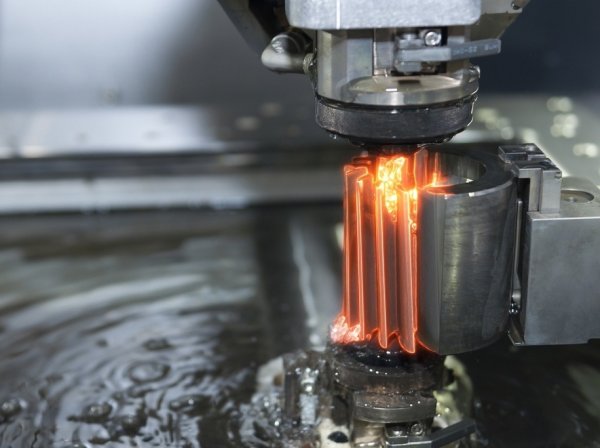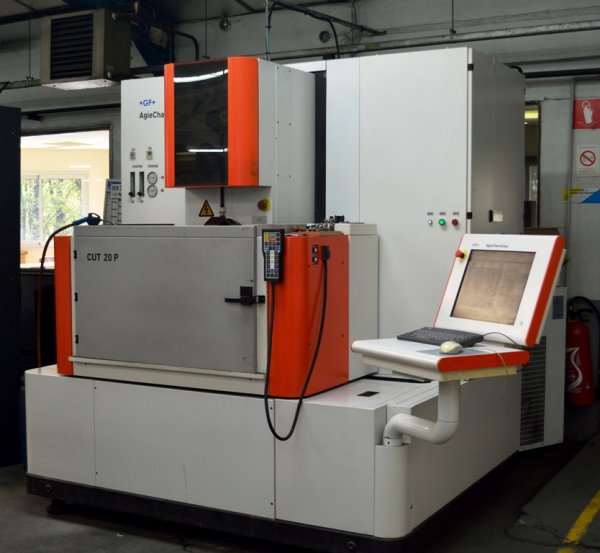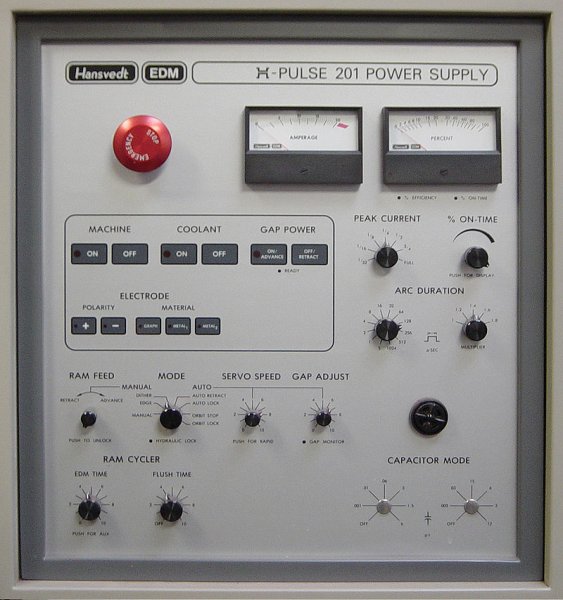Electroerosion treatment of metals
Electroerosion treatment of metals — various electrophysical methods for processing materials (see Electrophysical and electrochemical dimensional processing of materials).
The characteristic features of electric discharge machining are: the ability to process materials that are difficult or completely unprocessed by a mechanical method, the ability to produce products of complex shape, including those inaccessible to mechanical processing methods. The technology of electroerosion processing of metals is developing intensively, replacing the methods of mechanical processing by pressure and cutting.
This method of metal processing is based on the main concept of the thermal effect of electric impulse current, continuously supplied directly to the local sections of the part that needs to be processed to give it a certain shape and size (electrical erosion size). or changes in the structure and quality of the surface layer (hardening or coating).
In this case, the main ones are electric pulses (electrical discharges), converted in the treatment area into heat pulses, which actually perform the work of metal removal.
Due to the impulsive nature of the electric erosion process, even with a relatively low average power of the generator, large values of instantaneous power and electric energy discharges are achieved, sufficient to weaken the bonds of solid particles, separate them and evacuate them from the processing area.
Since the electric discharges, other things being equal, occur in a sequence determined by a minimum change in the distance between the interacting surfaces of the electrodes (selectivity condition), the shape of the electrode of the tool is displayed on the electrode of the workpiece.
In the case of dimensional treatment with electric erosion, it is necessary to observe 3 basic conditions:
- pulse power supply;
- the use of an electric spark or arc discharges, providing selective and local action on the surface of the object being processed;
- respecting the continuity of the process.
The principle of operation of the erosion treatment: 1 — wire, 2 — electric arc (erosion from electric discharge), 3 — power source, 4 — detail.
Electric discharge creates a short-term and on ogaranichennom area in the processing area is high temperature reaching (10 — 11) 103° C
Thermal effect of electric discharge on the electrodes can be represented as a result of the combined effect of surface (heat coming from the discharge channel) and bulk (heat from Joule — Lenz) heat.
Under the influence of the two sources, from the surface areas occupy a predominant place, baths of molten metal are formed at the cathode and anode, and part of the metal evaporates.
The intensity of the useful removal of metal from one electrode and the harmful one from the other, the nature of the evacuation mechanism, the specific energy consumption and the initial technological characteristics of mechanical processing with electric discharge depend on the thermophysical and electrical parameters of the process:
- thermal conductivity;
- heat capacity;
- temperatures and heats of fusion and vaporization;
- specific gravity and specific electrical resistance of electrode materials;
- the type of environment in which the electrodes are located and its physico-mechanical characteristics;
- duration;
- amplitudes;
- duty cycle and pulse frequency;
- the gap between the electrodes;
- conditions for evacuation of erosion products;
- some other factors.
The electric discharge machine consists of three main elements:
- a high-current pulse generator providing continuous supply of voltage pulses to the electrodes with a given frequency and parameters;
- devices for establishing and maintaining a gap between the electrodes of such a value that the discharges are continuously excited, converted into thermal energy in the processing zone, the products of metal removal and erosion are removed (feed regulator);
- the actual electric discharge treatment machine containing the necessary devices for installing and moving electrodes, supplying the treatment area with working fluid, suction of gases and vapors, automation, control, monitoring and protection.
Electric discharge machine control panel
The type of electric discharge (spark, arc), parameters of current pulses, voltage and other conditions determine the nature of mechanical machining with electric discharge, which is divided according to these characteristics into four main types:
- electric spark machining;
- processing of electrical impulses;
- anodic mechanical processing;
- processing of electrical contacts.
The common features of all types of electrical discharge machining are the unity of the physical mechanism of the process, the practical absence of force impact on the workpiece, the similarity of the kinematic schemes for shaping, the possibility of automating the machining process and the implementation of multi-station service, the commonality of the basic schemes for automatic feed control, working fluid feed systems, etc.
EDM hardening and coating is carried out by electric generators in air with a vibrating hardening electrode. Due to the short-term exposure to high temperatures, a kind of heat treatment, transfer and diffusion of alloying elements of the hardening electrode occurs.
The thickness of the solidified layer with carbide or graphite electrode is 0.03 - 0.05 mm, the surface hardness is much higher than the original, but its values fluctuate, the structure is inhomogeneous, and the surface cleanliness is low.
Electric discharge hardening is used for some types of tools and machine parts.




